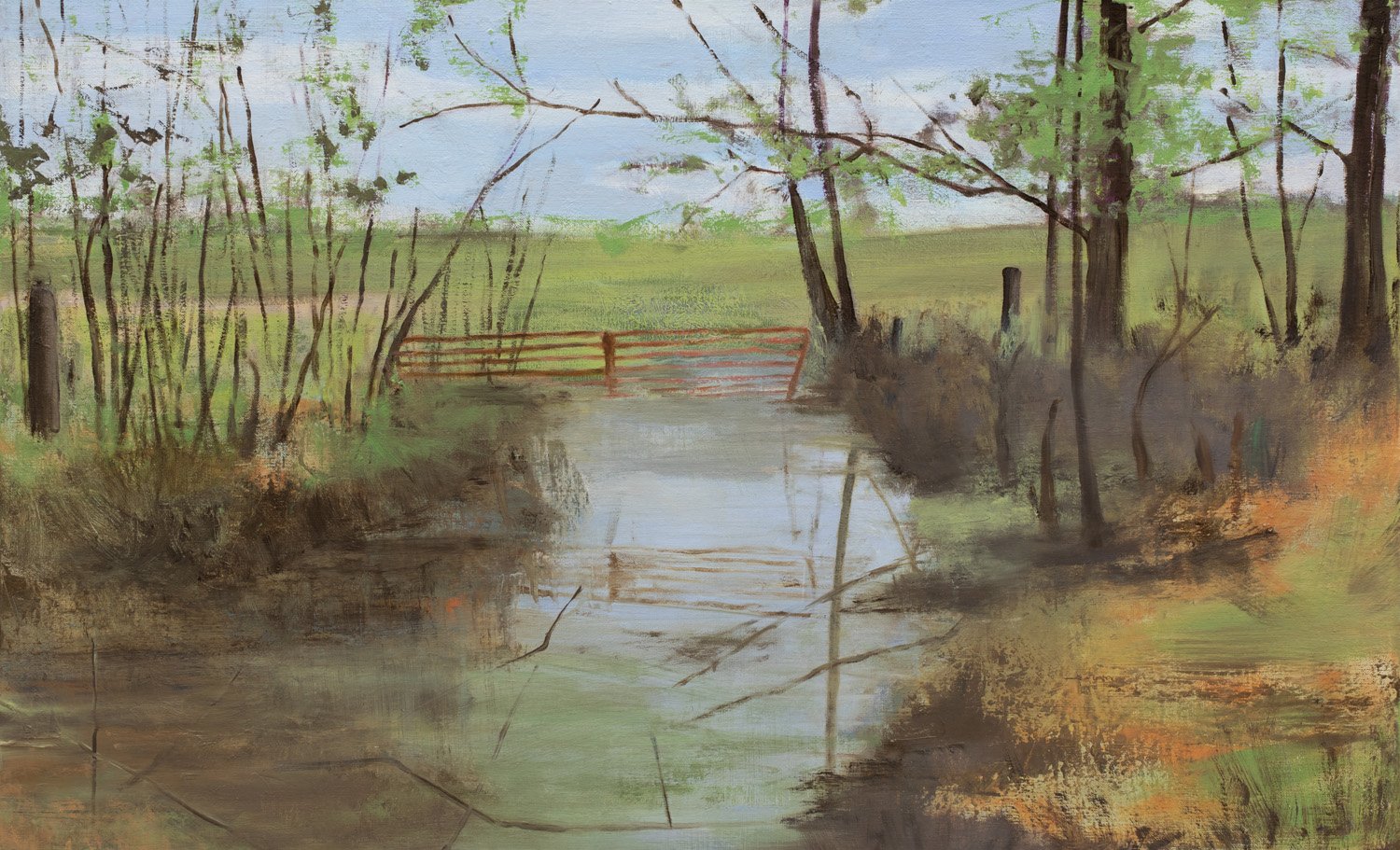How We Know the World Is Round
My father had a friend who was heard to say that the way he knew the world is round was that every so-and-so who ever left Kentucky came back. And I’m about to prove that theory by returning to Louisville next month for an exhibition at Moremen Gallery.
I’ve written before about my fascination with low watery places. Bogs, bottomlands, and marshes are magical. I come by that fascination honestly through my Strode ancestors, Strode being a name that signifies a low watery place. So when I’ve returned to Kentucky in the past, I’ve explored the mysteries of bottomlands. This one in Shelby County, Kentucky, with its rusting cattle gate, shows evidence of recent historical use. The reflections, the colors of the earth along the creek margins, the overhang of the trees, each is also a record of seasonal changes.
Shelby County Bottomland, Oil on Linen, 22 x 36 Inches
Bottomlands, often flooded in the Spring, are naturally fertile grounds. The bottomland on my grandfather’s tobacco farm in Mason County, Kentucky, on the Ohio River, was such a place. This painting is of Strode’s Run, the small creek that flows through the farm on its way to the Licking River and then the muddy Ohio.
Bottomland, Oil on Linen, 16 x 20 Inches
Pulling back for a longer view of the family farm, I remember my mother's nostalgia for the Ohio River. After she married and moved to Lexington, she continued to describe herself affectionately as a” river rat.” And so I am honored to have been invited to exhibit my work as part of AFLOAT: An Ohio River Way of Life. a city-wide celebration of life along the Ohio. The exhibition, Landscapes, Vessels and Jars, takes place from June 7 - July 6, at Moremen Gallery in Louisville.
Farm, Oil on Linen, 20 x 48 Inches


